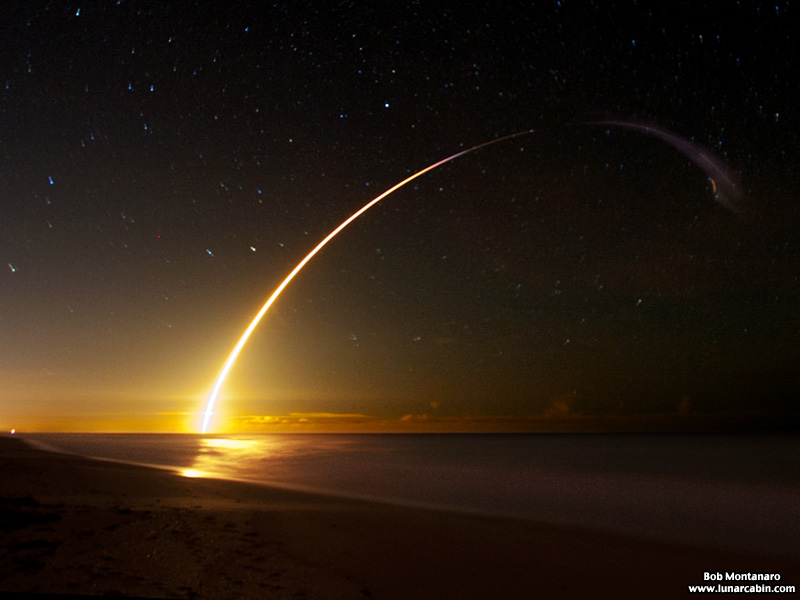 |
|
CRS-4 (Falcon 9) 21 September 2014 |
Space Launch Complex 40 Cape Canaveral Air Force Station |
 |
|
A SpaceX Falcon 9 rocket launches a Dragon cargo spacecraft to resupply the International Space Station at 1:52 a.m. on 21 September 2014 from Space Launch Complex 40 at Cape Canaveral Air Force Station. Note the end of the arc at right in this long time exposure taken from the beach; the first stage falling away can be seen as the short, wavy, orange line. The expanding exhaust gas high in the thinning atmosphere created the fan shape as the rocket traveled out of sight over the Atlantic Ocean. UPDATE: The CRS-4 Dragon spacecraft flew to the ISS again on the CRS-11 mission. From the SpaceX / NASA CRS-4 mission press kit: Dragon will be filled with more than 5,000 pounds of supplies and payloads, including critical materials to support 255 science and research investigations that will occur during Expeditions 41 and 42. Dragon will carry three powered cargo payloads in its pressurized section and two in its unpressurized trunk. Dragon will return with about 3,800 pounds of cargo, which includes crew supplies, hardware and computer resources, science experiments, space station hardware, and four powered payloads. For the first time, Dragon will carry live mammals – 20 rodents will ride up in in NASA’s Rodent Research Facility, developed by scientists and engineers at NASA’s Ames Research Center. The rodent research system enables researchers to study the long-term effects of microgravity—or weightlessness—on mammalian physiology. Other science payloads include the ISS-Rapid Scatterometer to monitor ocean surface wind speed and direction; a study of a small flowering plant related to cabbage that allows scientists to study plant growth and adaptations in space; and several new technology demonstrations, including the Special Purpose Inexpensive Satellite, or SpinSat, which tests how a small satellite moves and positions itself in space using new thruster technology and the 3-D Printing In Zero-G Technology Demonstration, which will be the first ever 3-D printer in space. |
|
All contents copyright Lunar Cabin |
|